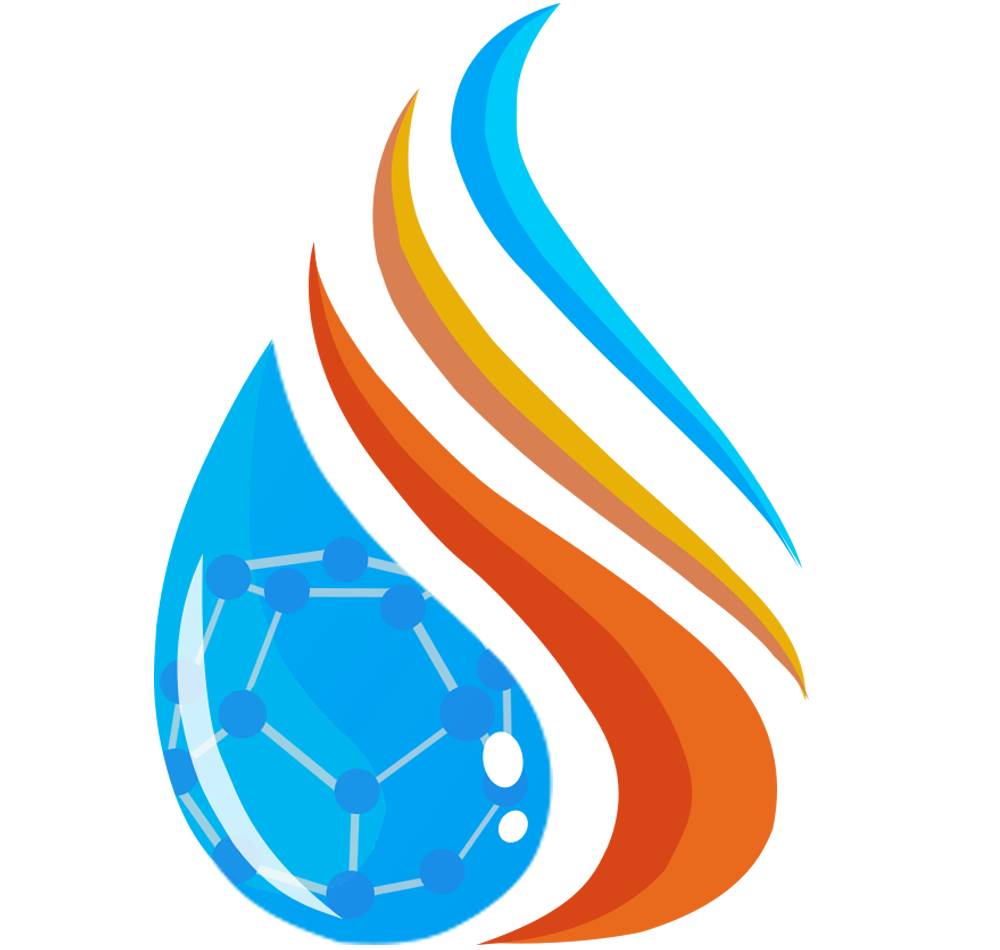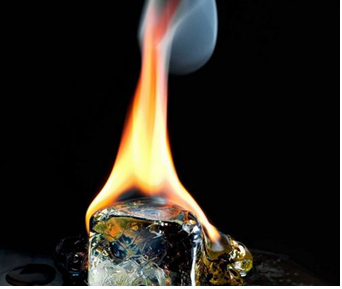《佳文速递》|2025年第3期
 收藏
收藏
Potassium acetate as an eco-friendly methane hydrate inhibitor:
Implications for thermodynamics and kinetics
醋酸钾作为一种环保型甲烷水合物抑制剂:对热力学和动力学的影响
发表时间:2025年6月7日
发表期刊:《Chemical Engineering Journal》
Shanling Zhang, Xiuping Zhong, Yingrui Ma, Sheng Jiang, Shaoqi Yin, Yating Huang, Chen Chen
Abstract: Methane hydrate (MH) formation in pipelines remains a critical issue in the oil and gas industry. This research examines the use of potassium acetate (KAc) as a thermodynamic inhibitor, focusing on its concentration-dependent effects and temperature influence near the freezing point. In addition, the synergistic effects of KAc and glycine (Gly) were investigated, revealing the mechanisms when used together. The results show that KAc effectively inhibits hydrate formation, with higher concentrations yielding better suppression. A9 wt% concentration effectively balances inhibition performance with cost efficiency. After adding KAc, the typical acceleration of hydrate formation near the freezing point was not observed, and higher temperatures improved inhibition. KAc also mitigated the surface hydrate armor effect, resulting in a higher v90 compared to pure water. The synergy between Gly and KAc further improved hydrate inhibition, enhancing both kinetic and thermodynamic properties. At 3 wt% Gly, the highest phase equilibrium pressure of 6.79 MPa was achieved. With cost considerations, a Gly concentration of 1 wt% resulted in a final hydrate saturation (Sh) of only 3.415 %, sufficiently meeting the requirements for hydrate prevention. These findings offer valuable insights for the development of cost-effective and environmentally sustainable hydrate inhibitors in the oil and gas industry.
Keywords: Methane hydrate; Thermodynamic inhibitor; Potassium acetate; Synergistic inhibition; Hydrate formation kinetics
Fig. 8. Comparison of hydrate formation characteristics of pure water and KAc solutions at different temperatures.
DOI:https://doi.org/10.1016/j.cej.2025.164560.
Research progress on bio-additives in hydrate-based energy technologies:
Application scenarios, classification, functions and mechanisms
水合物能源技术中生物添加剂的研究进展: 应用场景、分类、功能和机制
发表时间:2025年5月24日
发表期刊:《Applied Energy》
Kang Tan, Jingyu Lv, Zhichao Yin, Manli Ren, Fei Wang, Mengting Sun
Abstract: Gas hydrate technology has broad application prospects in fields of natural gas storage & transportation and gas separation. However, the slow formation kinetics restrict the industrial applications of gas hydrate technology in these scenarios, which need to be improved. At the same time, hydrates can cause blockage in offshore oil-gas exploitation & transportation, which need to be avoided to guarantee security. Accordingly, proper additives, possessing with promoting or inhibiting effects on hydrate formation, have been employed for regulating hydrate formation kinetics in different hydrate-based energy technologies, for achieving the promotion or inhibition purpose. Currently, the majority of additives are non-renewable and non-biodegradable petrochemical derivatives, which cause severe pollutions on environment and pose threats on ecosystem. Comparatively, bio-additives are derived from biomass, and thereby are easily available, renewable, nontoxic and easily biodegradable, which are more eco-friendly and reasonably hold great potentials for serving as green regulators for gas hydrate formation process. This review aims at bio-additives for regulating gas hydrate formation kinetics, lists the types of bio-additives for four different application scenarios, evaluates their effects on hydrate formation kinetics, analyzes their function mechanisms, assesses their application potentials, and furthermore, discusses and prospects the future research directions.
Keywords: Gas hydrates; Formation kinetics; Biomass-derived additives; Inhibition; Promotion
Fig. 7. (a) The process of hydrate formation in wet shavings. (b) Droplet shape under different concentration solutions.
DOI:https://doi.org/10.1016/j.apenergy.2025.126164.
Heat transfer enhancement-driven synergistic kinetic promotion of
methane hydrate formation-dissociation cycles for advanced solidified
natural gas technology
传热增强驱动的甲烷水合物形成-解离循环协同动力学促进先进的固化天然气技术
发表时间:2025年6月6日
发表期刊:《Energy》
Bin Wang, Jing-Chun Feng, Yue Zhang, Yuhang Zhang, Xiao Chen, Yan Xie, Pengfei Wang, Si Zhang
Abstract: The rising demand for natural gas, driven by its lower carbon footprint and abundant reserves, has intensified the focus on developing efficient, safe, and sustainable gas storage solutions. Hydrate-based solidified natural gas (SNG) technology stands out as a promising environmentally friendly option, offering advantages such as low energy consumption and reduced carbon emissions. However, its commercial deployment remains limited by the inherently slow kinetics of hydrate formation and the inefficient release of gas during dissociation. To address these dual challenges, this study investigated the pivotal role of heat transfer in enhancing the kinetics of both methane hydrate formation and dissociation. Porous sediments with varying thermal conductivities were prepared by adjusting the volume ratios of silica and alumina particles, thereby systematically modifying their heat transfer properties. Experimental results demonstrate that improved heat transfer effectively accelerated both hydrate formation and dissociation process, enabling more efficient gas storage and release. Specifically, the average hydrate formation rates at t50 and t90 in the high-thermal-conductivity alumina sediment were 5.08 and 6.27 times higher, respectively, than those in the low-thermal-conductivity silica sediment. During dissociation, the time interval between t50 and t90 was reduced by 59.10 % in the alumina sediment. These findings provide mechanistic insights into the critical role of thermal management in promoting hydrate formation and dissociation and overcoming kinetic limitations. The results offer practical guidance for designing thermally efficient hydrate-based SNG systems and contribute to the advancement of scalable, industrial-ready technologies for low-carbon energy storage and transportation.
Keywords: Methane hydrate; Kinetics; Formation and dissociation; Heat transfer; Gas storage and transportation
Fig. 5. Comparisons of (a) the time required to achieve 50 %, 60 %, 70 %, 80 %, and 90 % of the total amount of hydrates formed (t50, t60, t70, t80, and t90) and (b) the corresponding average hydrate formation rates for various alumina contents.
DOI:https://doi.org/10.1016/j.energy.2025.137009
Convection-conduction heat transfer and seepage in hydrate-bearing sandy sediments under hot fluid injection: A thermo-hydro-chemical perspective
热流体注入条件下含水合物砂质沉积物中的对流-传导传热和渗流: 热-水-化学视角
发表时间:2025年6月6日
发表期刊:《Energy》
Decai Lin, Jia Liu, Jingsheng Lu, Kunlin Ma, Qi Zhang, Dongliang Li, Zhiming Xia, Xiaosen Li, Deqing Liang
Abstract: In this study, a gas-saturated hydrate sample was synthesized within sand sediment, and thermal stimulation via a central injection well induced hydrate dissociation. Heat transfer and seepage characteristics of hydrate-bearing sandy sediments were examined during fluid injection. A heat transfer model was established to analyze convective heat transfer and hydrate saturation distribution at various regions of the sediment. The results indicate that the seepage of injected fluid in the sediment was non-uniform, with slower vertical flow, leading to the formation of a liquid layer at the top. Thermal stimulation led to rapid near-wellbore temperature rises from strong convective heat transfer during the early injection stages, with the exception of hot brine injection. The temperature distribution at the top edge of the sediment remained largely uniform, while heat conduction led to a limited temperature rise at the bottom edge. Convective heat transfer intensity increased with higher injection temperatures near the wellbore, with seawater injection outperforming pure water injection, and the heat transfer mechanisms near the wellbore alternating between convection and conduction. Hydrate dissociation advanced radially, peaking in the middle sediment region; warm seawater and higher injection temperatures notably enhanced dissociation, especially near the wellbore and edges.
Keywords: Gas-saturated hydrate; Thermal stimulation; Heat transfer characteristics; Convective heat transfer
Fig. 3. Conceptual diagram of heat transfer model for hydrate-bearing sandy sediments.
DOI:https://doi.org/10.1016/j.energy.2025.136987.
Continuous and efficient production of CH4/THF/DIOX composite hydrates for energy dense storage under moderate conditions
在温和条件下连续高效地生产用于能量密集存储的 CH4/THF/DIOX 复合水合物
发表时间:2025年5月21日
发表期刊:《Journal of Environmental Chemical Engineering》
Yifan Xu, Peng Zhang, Xin Xiang, Rongtong Qin, Daiming Liu, Guodong Zhang, Fei Wang,
Abstract: Hydrates provide a new approach for energy dense storage under moderate conditions, but poor hydration efficiency and the inability to continuously produce hydrates impede their commercialization. In order to address these two issues, a novel strategy was proposed to achieve hydrate continuous and efficient production under moderate conditions, the dual thermodynamic promoter of THF and DIOX was used to improve hydrate production pressure, D-leucine was employed to accelerate hydrate production kinetics, while the integration of hydrate generation, separation and storage was achieved using a spiral-agitated reactor. Exceptional hydrate production efficiency, conveying efficiency and storage efficiency were obtained, 90 % hydrate production can be completed within 19.21 min, the storage tank can be fully filled within 10 min, and methane apparent storage capacity in the storage tank is up to 79.21 V/V at 3.8 MPa, the energy storage density increases 87.08 % comparing with compressed methane. Raman spectroscopy was used to evaluate hydrate structures, and it is evident that a composite hydrate of CH4/THF/DIOX was formed. The proposed strategy simplifies hydrate production process, causing it to be more energy-efficient, and the average energy consumption for producing one mole hydrates is only 0.00973 kW·h.
Keywords: Methane storage; Hydrates; Continuous production; Moderate conditions; Spiral agitation and convey; Raman spectra
Fig. 7. Experimental process of the integration of hydrate formation, separation and storage.
DOI:https://doi.org/10.1016/j.jece.2025.117225.
Optimizing CH4 recovery and CO2 sequestration in natural gas hydrate exploitation through dynamic adjustment of CO2/N2 injection composition: A simulation study
通过动态调整 CO2/N2 注入成分,优化天然气水合物开采中的 CH4 回收和 CO2 封存的模拟研究
发表时间:2025年5月26日
发表期刊:《Fuel》
Jing-Yu Kan, Jian Kang, Jun-Rong Qin, Xing Huang, Nan Li, Zhi Li, Guang-Jin Chen
Abstract: The injection of CO2/N2 mixture has been proven to be an efficient method for hydrate exploitation, exhibiting significant application potential. However, the efficient release of CH4 from hydrates relies on a high concentration of N2 in the injected gas. This leads to a decrease in the CH4 concentration around the production well, which subsequently causes a decline in CH4 recovery and CH4 content of the produced gas. Meanwhile, it is also unfavorable to CO2 sequestration. This work proposes a new method for hydrate production which involves injecting CO2/N2 with varying composition. A total of six simulation runs were conducted to investigate the effects of gas composition adjustment direction and range on CH4 production, CO2 sequestration, the quality of produced gas, and feed gas consumption. The results indicated that periodically reducing N2 content (from 70 mol% to 30 mol%) in injection gas during production can balance both CH4 release and extraction efficiency. Compared to using a fixed gas composition, this method achieved higher CH4 production efficiency and CH4 content with a lower injection-production ratio, while simultaneously improving CO2 sequestration ratio. This work is of significant importance for the economical and efficient development of natural gas hydrates and CO2 sequestration based on hydrates.
Keywords: Natural gas hydrate; Exploitation; Varying-composition; CO2/N2 injection; Numerical simulation
Fig. 5. Evolution of the spatial distribution of hydrate saturation (Case 2).
DOI:https://doi.org/10.1016/j.fuel.2025.135790.
 UPC-WY
UPC-WY

 DWOG-Hyd 2021
67帖子
DWOG-Hyd 2021
67帖子
 Haotian Wang
9帖子
Haotian Wang
9帖子
